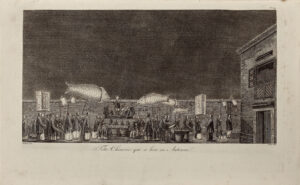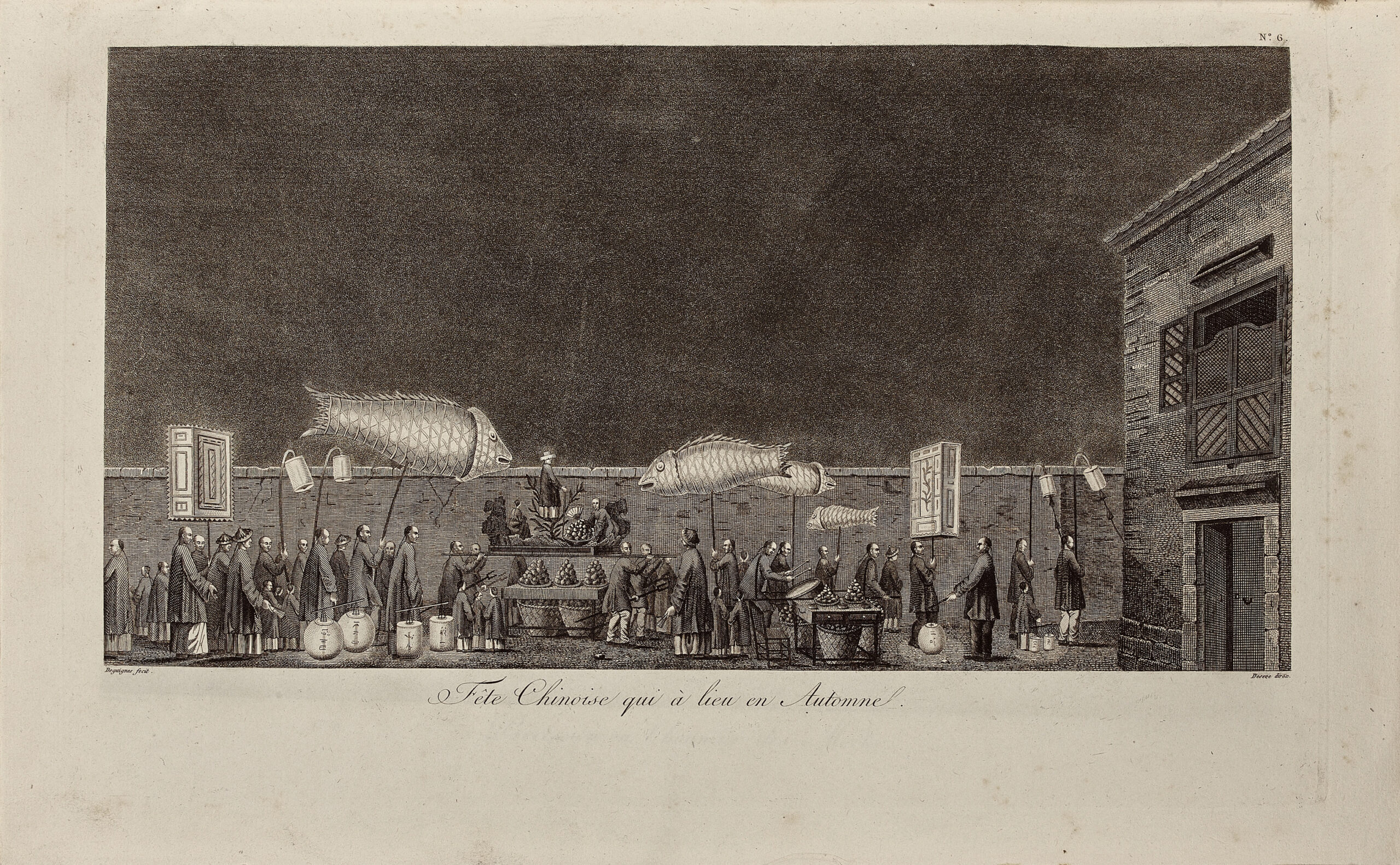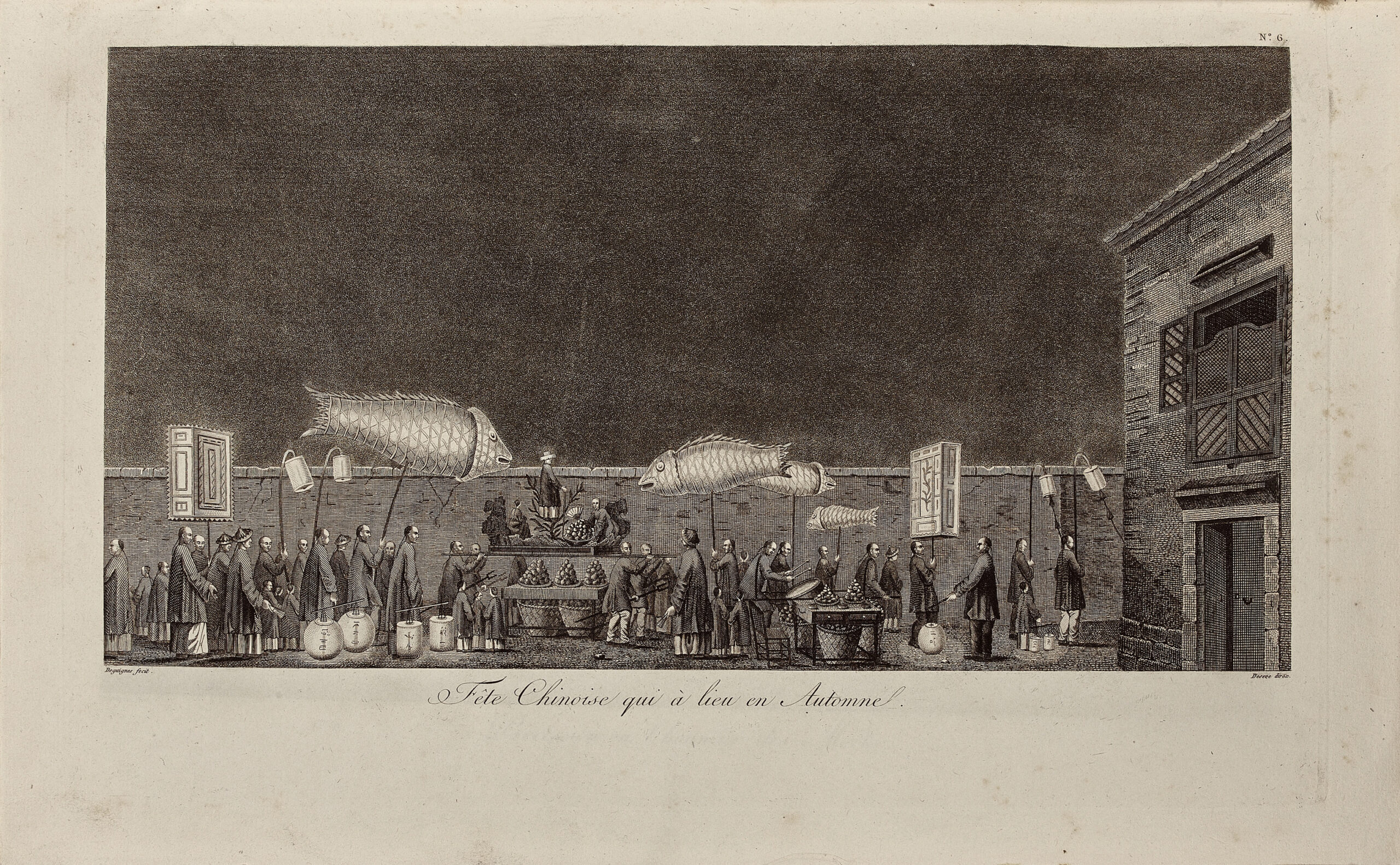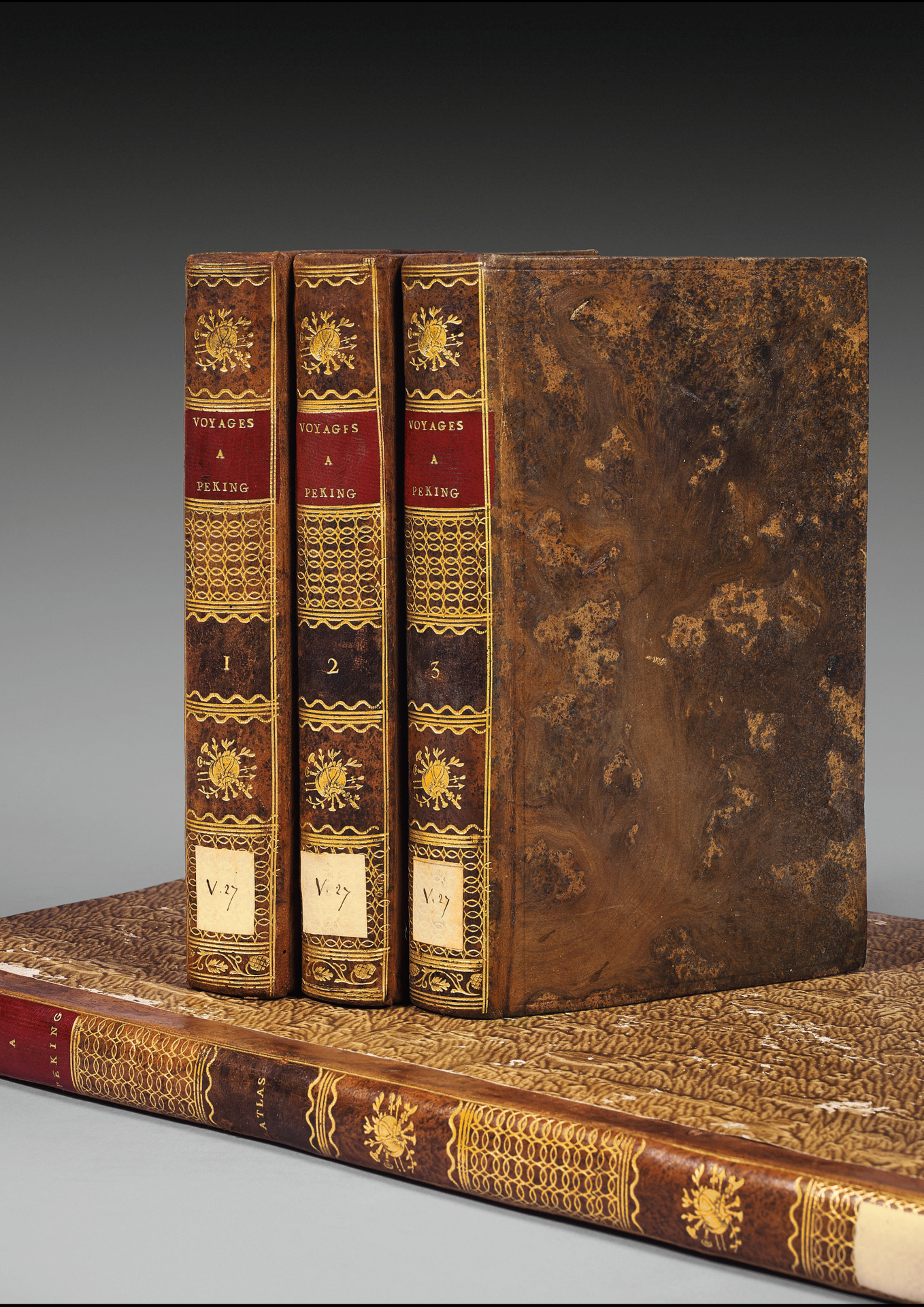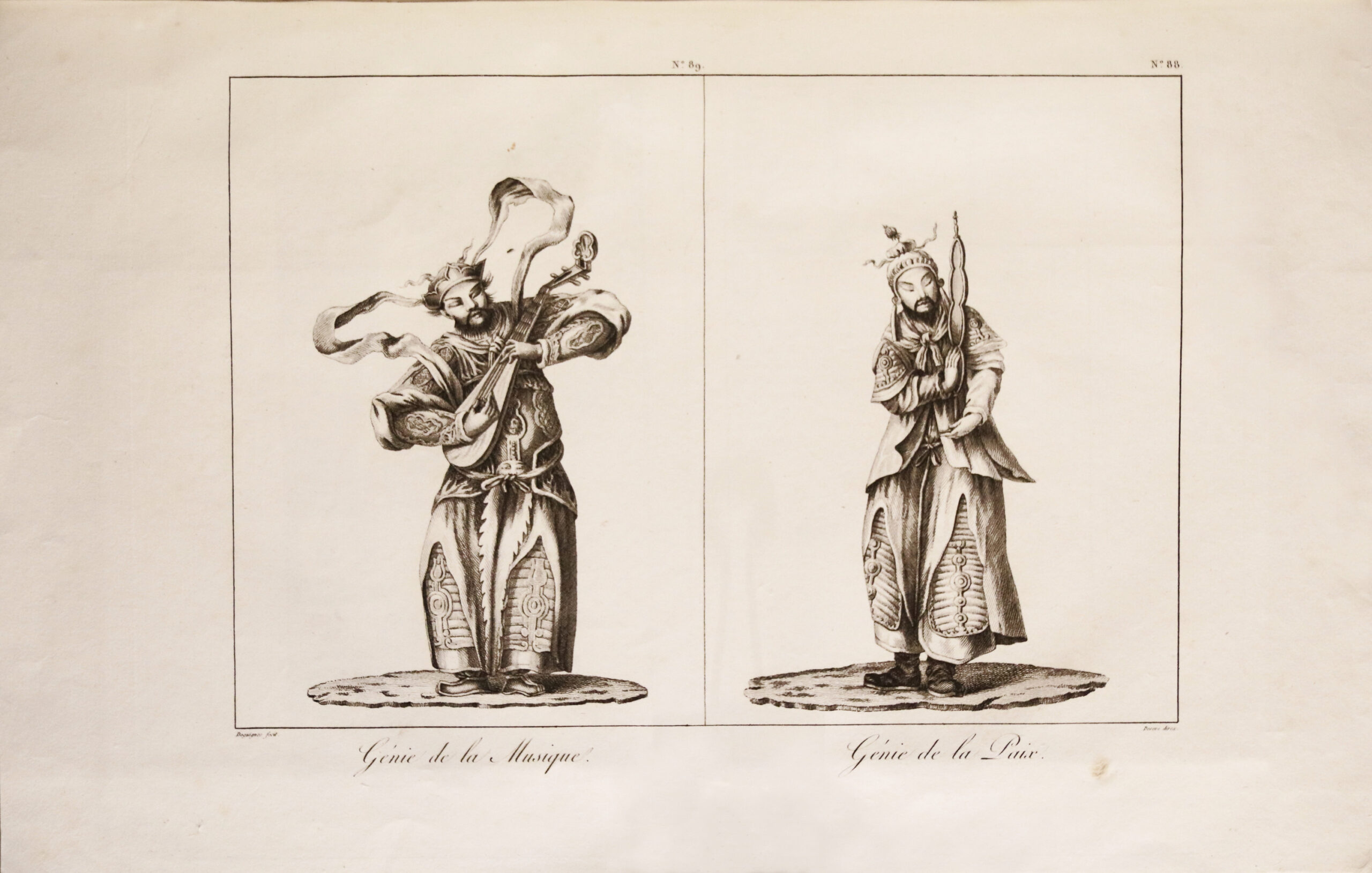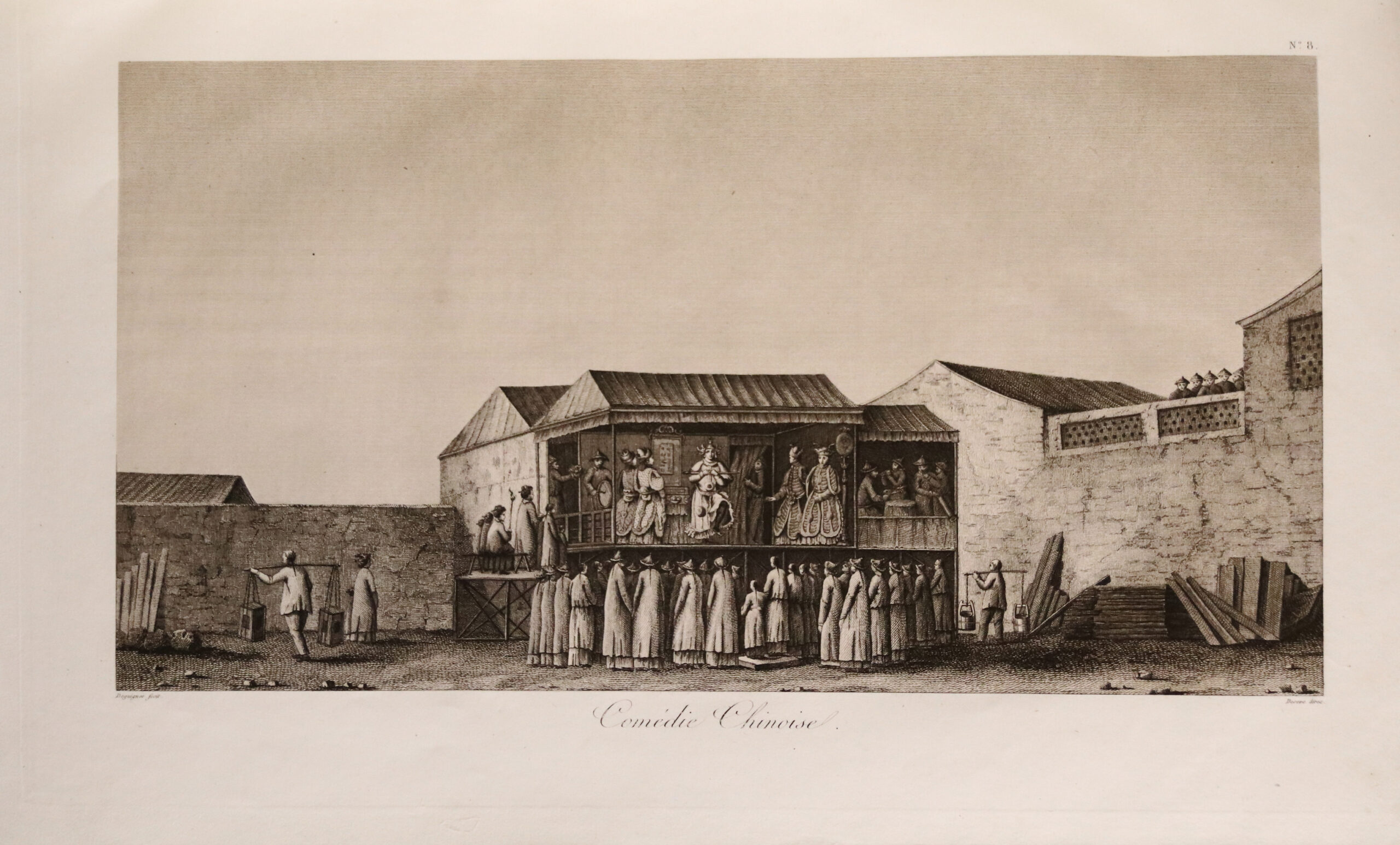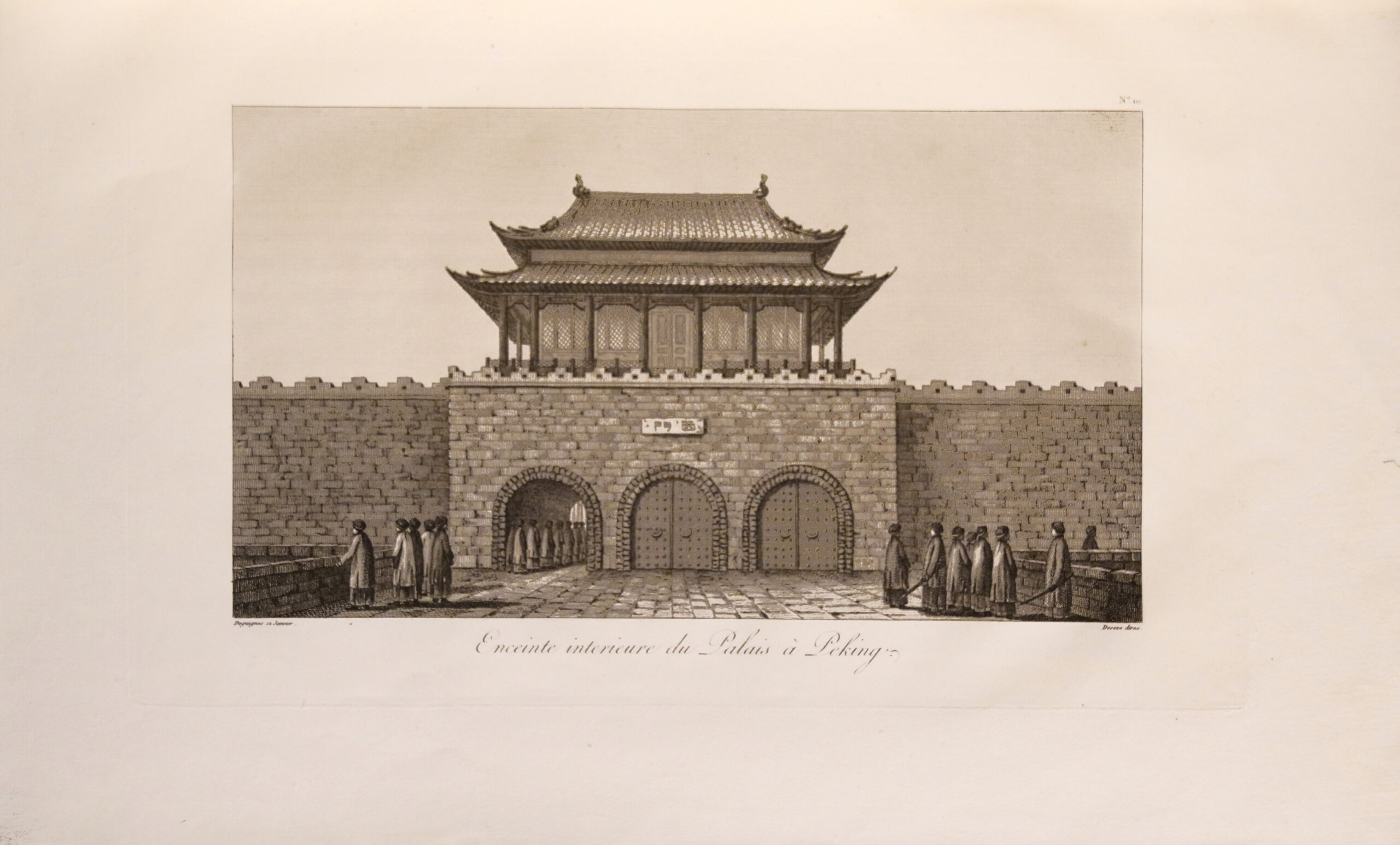Paris, de l’Imprimerie Impériale, 1808.
3 volumes 8vo of text [197 x 118 mm] and 1folio atlas [415 x 265 mm] of: I/ (2) ll., lxiii pp., 439 pp.; II/ (2) ll., 476 pp.; III/ (2) ll., 488 pp. Atlas : (2) ll., 97 engravings on 65 plates including 4 folding maps.
Bound in contemporary full calf in a design resembling tree roots, flat spines decorated with gilt music instruments, red and brown morocco lettering pieces, library labels on the foot of the spines, sprinkled edges. Atlas bound the same way but in a half-binding with corners of vellum, the spine is decorated as the text volumes. Contemporary binding.
First edition of this fascinating travel account to China.
Cordier, Sinica, 2351 ; Brunet, II, 568.
“Highly valued work, illustrated with 97 bêutiful engravings: views, costumes, maps, etc.” Chadenat, 590.
Joseph de Guignes (1749-1845), orientalist, sinologist and consul of France in China, spent 17 yêrs in this country.
“The travel account is divided into 3 parts: in the first part, the author gives a precis of the ‘ancient’ history of China, trying to prove to that the foundation of this vast empire only dates from the conquest of the Tartars-Mogul, the yêr 1279 of the Christian arê.
The second part dêls with the journey of M. de Guignes to Beijing and his return to Kanton. The third and the most interesting in all respects, gives the collection of observations he made on the Chinese nation during his long stay. […]
The journey from Kanton to Beijing, is, strictly spêking, only an itinerary; but the author writes about the places, the things he sees, he doesn’t add any ornament to the things he describes, and in this account, simple as it is, the rêder gets a clêrer and fuller idê about China and its Hinhabitants, […]
The last part of the work of MR. de Guignes can’t get enough praise, in which he gives the most complete and accurate description of the government, the habits, the customs, the trade and the industry of the Chinese people. […] I will not be afraid to say that of all the accounts published about these remote arês so far, the one of MR. de Guignes is the most proper to get to know and appreciate the actual physical and moral conditions of China and its inhabitants.
The atlas, attached to this work, gives it even more value. The 93 engravings that it encloses, and of which the drawings were made on the spot, by Mr. de Guignes himself, lêve nothing to be desired for the grace of the composition and the truth of the details. The execution lives up to the reputation of the burin of Mr. Desève. To announce that this work comes from the imperial presses is to praise the typographic part…
Thanks are due to the authority and friends of the author whose advices to publish this work have enriched the history of travels of a work that obtained a very distinguished rank.” (Mercure de France, 1809, vol. 35)
Some sixty pages are dedicated to the Philippines and the Ile de France.
The atlas contains 97 plates engraved by Desève from the author’s drawings, depicting monuments, views, festivities, boats, costumes, plants, divinities, musical notations, etc.
Very bêutiful and fresh copy, uniformly bound at the time, coming from a princely family.
